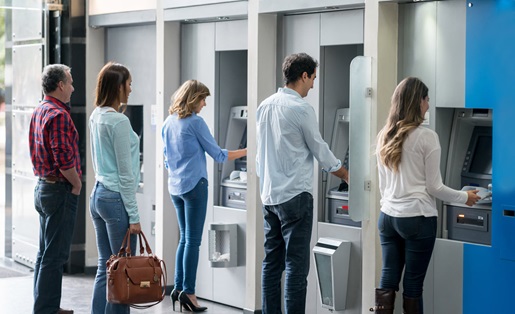You might already be paperless. Here's what comes next.
Business process digitization is a useful practice for 21st-century businesses that can trim down your response time, speed up your workflow, and smooth down the edges of your office environment. It's not just going paperless, although that is part of it. It's about leaving your comfort zone in search of something better. There’s always value in proven solutions, of course, but not when stacks of paper are slowing you down compared to the digital-first competition.
That’s what digitization of companies gets you as a manager or employee: less waste of paper, space, and your business’ most precious resource, time. It can start as simply as airdropping contact info instead of exchanging cards, or displaying QR codes instead of handing out brochures, but it goes much further still. This guide will break down in practical terms what business process digitization is, what it isn't, and how to get started with it, no matter how big or change-averse your office space might be.
Want to know more about upgrading your products and services? Check out The Executive's Guide to Digitization in Business.
Business process digitization: Why now, and why you
It's occasionally called the "large incumbent vs. nimble newcomer" question. A big company with an established history can still get the right contracts and connections through market dominance, old relationships, or sheer institutional momentum, but this is 2022.
It's never too late to learn something new, especially when your up-and-coming competition is almost certainly built around business process digitization as a core principle.
For purposes of the discussion, a "business process" is a term for anything business-related you do in the office. It could be a meeting, a discussion, an afternoon's research, a few hours of data entry, or anything similar.
Digitizing that business process means using digital tools to improve your office's efficiency. You can shave minutes off a meeting by making it a Zoom call rather than requiring attendees to gather in a meeting room. A new employee can be onboarded with a tablet, rather than a clipboard and paper, so their questions and answers go straight to your server. The whiteboard in your meeting room can be replaced with a virtual equivalent, accessible from any terminal in the building, or even any company smartphone.
If there's something you do in your office, especially if it's something time-consuming or otherwise clunky, an optimized solution likely awaits through business process digitization.
Did You Know?:The fi-8170 can scan up to 70 pages per minute and 10,000 pages per day. Click here to learn more.
Digitization vs. digitalization vs. digital transformation: A guide at a glance
When you're first jumping into the field, it's easy to get business process digitization, digitalization, and digital transformation confused. They may even seem like they ought to be synonyms, but they aren't.
Digitization
This is the process of converting anything into a digital format that a computer can access. Physical documents and photographs can be scanned; voice messages or video can be re-recorded or transferred.
Digitalization
By a strict dictionary definition, digitalization is much the same as digitization. In relatively new business terminology, however, digitalization is used to refer to a process that transforms data, in order to change or enhance a business model.
Imagine you run a bakery. If you scan your menu and make it into a .jpg or .pdf, you've digitized it. If you turn your menu into a touchscreen-enabled interactive experience so your customers can order and pay for their cakes and pies before they're anywhere near the counter, you've digitalized that menu.
Digital transformation
This combines the previous two processes and uses them in tandem to facilitate a proper digitization business process.
Did You Know?:PCMagazine described the ScanSnap iX1300 as “a snappy, accurate portable document scanner that's excellent for digitizing documents on the road or wherever space is limited.” Click here to read the full review and learn why it earned a 4 out of 5 rating.
Everyone has to start somewhere
If you’re starting your digitization of business processes from flat zero, it can be a difficult proposition, especially for older companies. Mountains of valuable paper and reams of data may need to be run through the digitization process; with anything less than the best tools, it’s easily months of work.
You can cut that back to weeks or less with the right equipment, though. Digitization doesn’t have to be a slow, arduous process of moving paper and watching an old-school scanner flash page-by-page. Modern, purpose-built tools exist to get the job done fast and accurately, with minimal impact on your bottom line.
Our recommendation: fi and SP Series scanners
The fi and SP Series scanners were made with process digitization in mind. With high-speed models, you can turn 10,000 sheets a day into a digital archive, which will take a bite out of even the biggest paper library or paper workflows.
For tackling larger or irregularly sized documents — a restaurant menu, installation instructions, a product brochure — we also offer multiple scanners with built-in flatbeds in addition to automated document feeders. The hardest thing is just getting started with process digitization, and that’s where the right scanner for the job can make all the difference.










